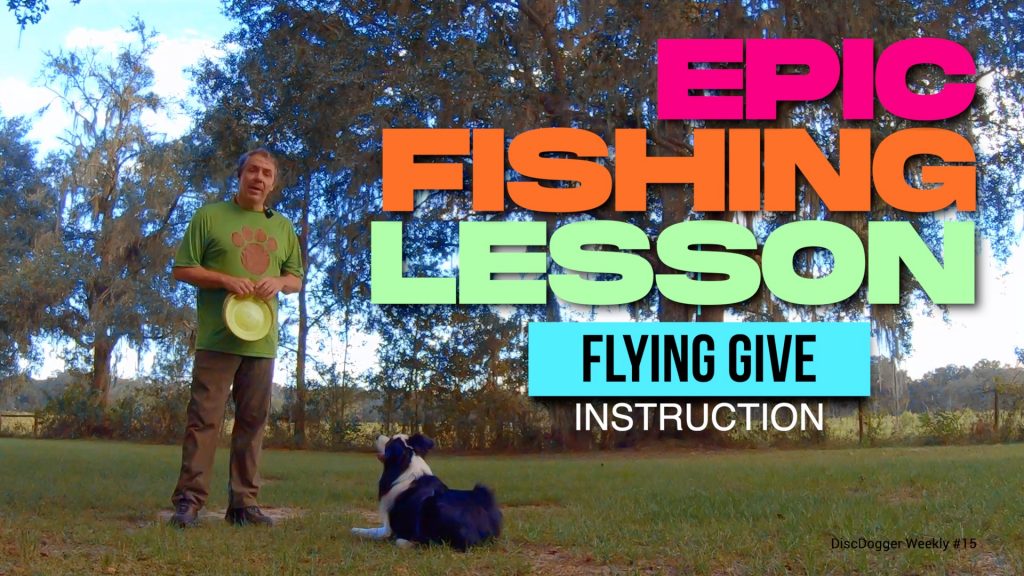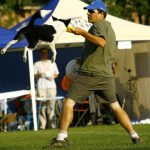
Pawsitive Vybe S2E6 – Duration Dissected
Duration Behaviors are behaviors that happen during a period of time. A Down Stay is a duration behavior, so is: chilling out on a pedestal, prolonged Attention, heel, a lingering nose or foot Target…
Duration is defined by the Release. If you didn’t release your dog from the behavior you didn’t worked duration. If you want your dog to Stay until you say so, you need to learn to Release your dog. Release Early & Release Often…
Pawsitive Vybe is a weekly 1/2 hour dog training & lifestyle webseries on YouTube that is seeking wider distribution and production support. It is self produced by Ron Watson of Pawsitive Vybe.
duration is composed of 2 parts – Action & Duration. the Action is a behavior and Duration is an absence of behavior.
1:34 – Perch on Paw Pods with Loot
3:52 – Show Intro
4:30 – Bitework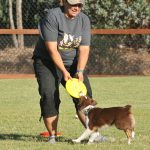 Bitework is an activity or a game that consists of biting and dropping a toy on cue. Cued Bites and cued Drops (and Gives) can be used to teach and reinforce many behaviors.... More for Give
Bitework is an activity or a game that consists of biting and dropping a toy on cue. Cued Bites and cued Drops (and Gives) can be used to teach and reinforce many behaviors.... More for Give The Give is a retrieve to the hand. A cued Give is a foundational skill that is not super useful in the actual performance of disc dog freestyle, and has huge applications for... More with Loot
The Give is a retrieve to the hand. A cued Give is a foundational skill that is not super useful in the actual performance of disc dog freestyle, and has huge applications for... More with Loot
5:42 – Paw Pods Reloaded
8:15 -EZ Ryder Goes Swimming
10:57 – FitPaws with Lois Lane
11:52 – Dissecting Duration
14:40 – Backer Shoutout!
15:32 – Duration is a Function of Math
18:47 – Standing Duration
22:40 – Duration with Distraction
24:35 – More Duration with Loot
27:42 – Show Close…
Leveraging Concepts
The idea that Duration is defined by the Release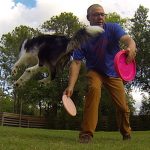 Release has many meanings in disc. Throws and throw variations can be referred to as releases. Sometimes you talk about the dog releasing something, the toy, or the environment, as in to stop... More and that Duration consists of two distinct elements: Action & Duration are important concepts for efficient and successful learning of Duration behaviors.
Release has many meanings in disc. Throws and throw variations can be referred to as releases. Sometimes you talk about the dog releasing something, the toy, or the environment, as in to stop... More and that Duration consists of two distinct elements: Action & Duration are important concepts for efficient and successful learning of Duration behaviors.
Duration has a beginning and an end – that’s kind of the definition of Duration.
Most handlers never make it to the end. They get the start of the behavior, they add some value, and then try to go too far too fast trying to increase Duration and decrease Rate of Reinforcement Rate of Reinforcement can be expressed in terms of Cookies Per Minute (CPM). How many cookies delivered over time has a great impact on dog training. Traditional positive training says you should shoot... More before the concept of the Release is installed. Don’t do this.
Rate of Reinforcement can be expressed in terms of Cookies Per Minute (CPM). How many cookies delivered over time has a great impact on dog training. Traditional positive training says you should shoot... More before the concept of the Release is installed. Don’t do this.
You want to book end the behavior. Open the book with the start of the behavior, fill each page with goodness via a proper Rate of Reinforcement (whatever is required to maintain the behavior), and close the book with a Release cue and a cookie. The end.
When it comes to Duration behaviors, if the dog fails, smack the handler. It is your responsibility to Release your dog. That’s all you have to do. So focus on that instead of the ‘Stay’ part.
Classical vs Operant Conditioning
Marking behaviors is about Action. It’s Operant ConditioningOperant Conditioning is a training technique that teaches the learner that behavior affects consequence. A dog that is operant understands that her behavior affects her consequence. “I do this, and then that happens.”... More: behavior affects consequence. When you have charged up a positive marker, your dog knows that marker means an action took place. That is important for the initial part of the duration behavior, the Action, but is very counter productive on the Duration part.
Because Duration is an absence of behavior or a state of being, it is based upon Classical ConditioningClassical conditioning has nothing to do with behavior and is all about emotion and physiology. If you remember Pavlov’s dogs, you remember the bell, food and drool, but nobody knows what the dogs... More. Classical conditioning has nothing to do with behavior, nothing whatsoever nowhere in Pavlov’s dogs is there anything mentioned about what the dogs are doing when the bell is rung. They could be growling, sniffing, barking – it just doesn’t matter because Classical conditioning is about pairing a stimulus or a state of being with reinforcement (or punishment) to alter physiology, perception or emotion.
Once the dog is doing their behavior, cookies come without markers.
Duration is a Function of Math
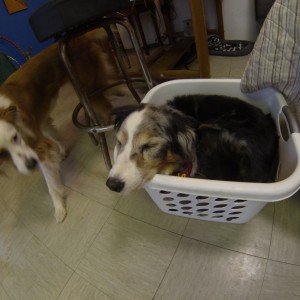
When working Duration, you will use whatever rate of reinforcement that is necessary for holding the behavior. This might mean a constant stream of cookies. It might mean a cookie every 2 or 4 seconds, whatever frequency of cookies is necessary to ensure the continued performance of the behavior is what you want to use.
Cookie…”one one thousand – 2 one thousand – 3 one thousand”… cookie – just set up a frequency that is guaranteed to work and deliver cookies. Remember that if your dog fails, smack yourself for not choosing or delivering the proper rate of reinforcement for the situation.
You can set a 3-5 minute stay in a low distraction environment in 7-10 minutes if you forget about testing or challenging the dog and instead focus on reinforcing the behavior so the dog can pass the test.
Speaking of Math…
Setting up a test before the content is understood is not fair and not good for learning. I believe that almost all of the people who “hate” math, hate it because they were tested on their multiplication tables before they learned them. Nothing is worse than taking a test that you cannot understand and can’t possibly hope to pass.
Testing is proofing of the learning process. It’s what you do after you have taught your subject matter in order to see if it was learned. Proofing on the fly, or testing while learning is a recipe for disaster for most learners. Don’t do it.
Teach the skill before you test it.
Create Desire Before Duration
In addition to not testing the behavior before it has been learned, you want to build value on the behavior before you start to expect it. Create a desire to do the behavior and it will be more likely to happen. If you have desire on the Action before you work duration, that part is likely to happen.
If you liberally reinforce the down at a proper Rate of Reinforcement (whatever is required to maintain the behavior) you will create a desire to perform the behavior. Doing something you like is far more likely to happen than doing something that you are not at all excited about.
Pay the Release
Many people don’t want to pay the Release of the Duration behavior. They believe that it will make the dog likely to jump up on their own whenever. That is not true. Marking and reinforcing the cued Release marks and reinforces the taking of the Release cue.
This is important for two reasons. First being that you are going to create such value on your duration behavior that the dog is not going to want to stop doing it (when that starts to happen, you know you have created a bunch of value for the skill and that there is a desire to perform it…)
Another reason for paying the Release is so you have control over where the dog Releases to and the Release goes through you. Feed from your hand and your dog will come to you. Toss your cookie and the dog will go where you toss the cookie to. But either way, the dog deals with you after the Duration behavior. Releasing the dog into the environment is not a solid finish for a healthy relationship.
Discussion in Comments Below
I’ll do my best to answer any and all questions on the show, Attention/Dismissal or Targeting, or the Threshold concept in the comments below. Don’t be shy, the only silly questions are the ones not asked.







